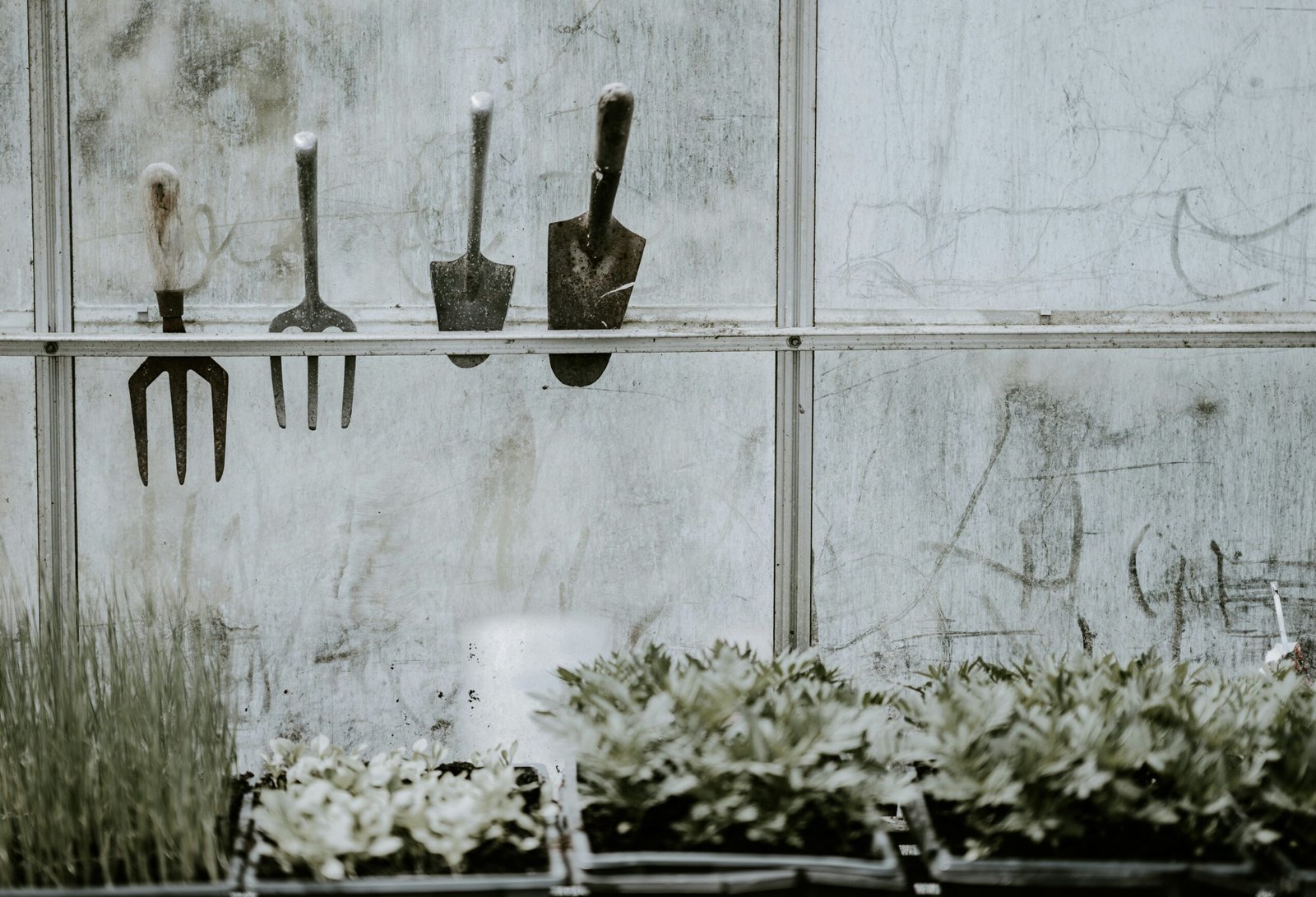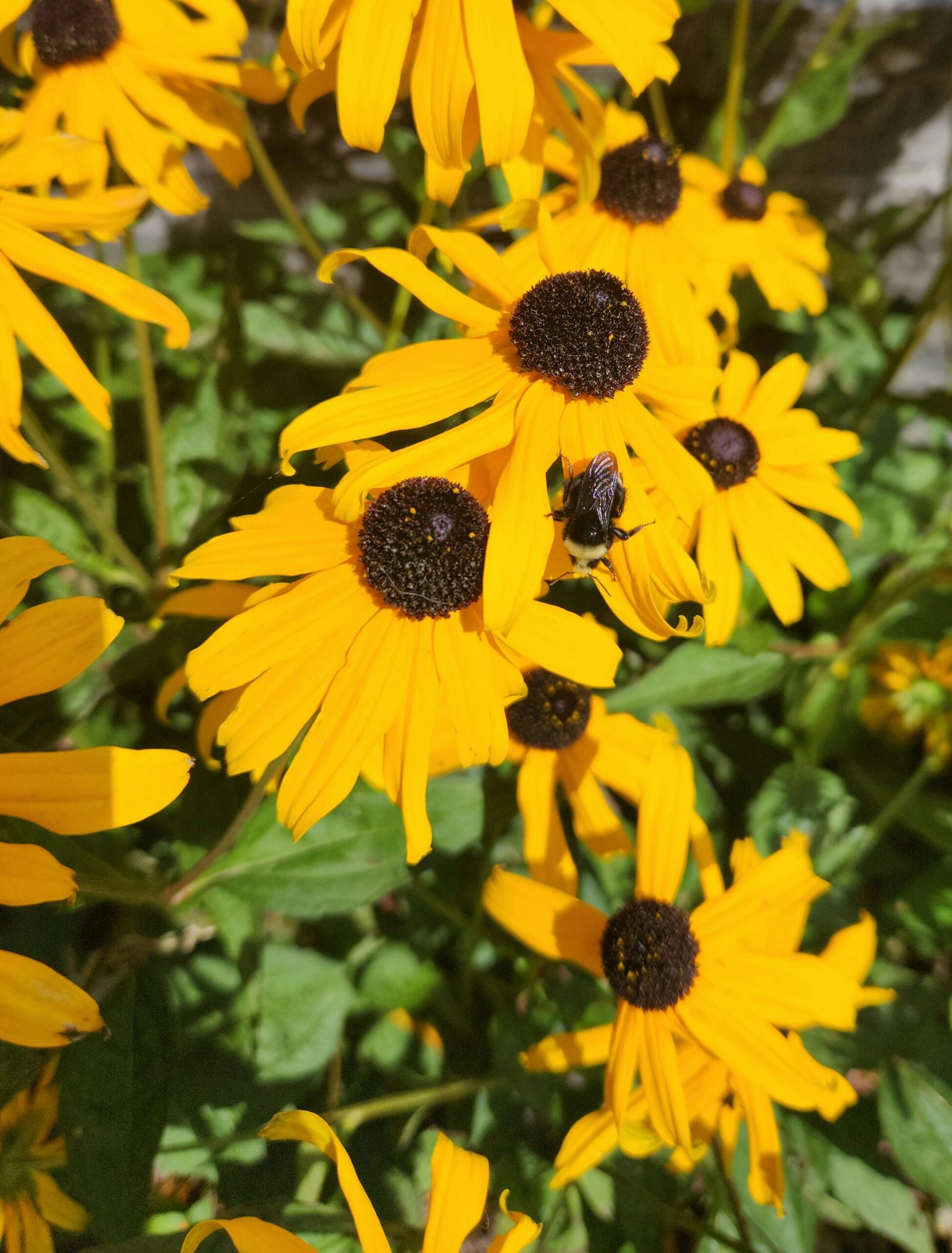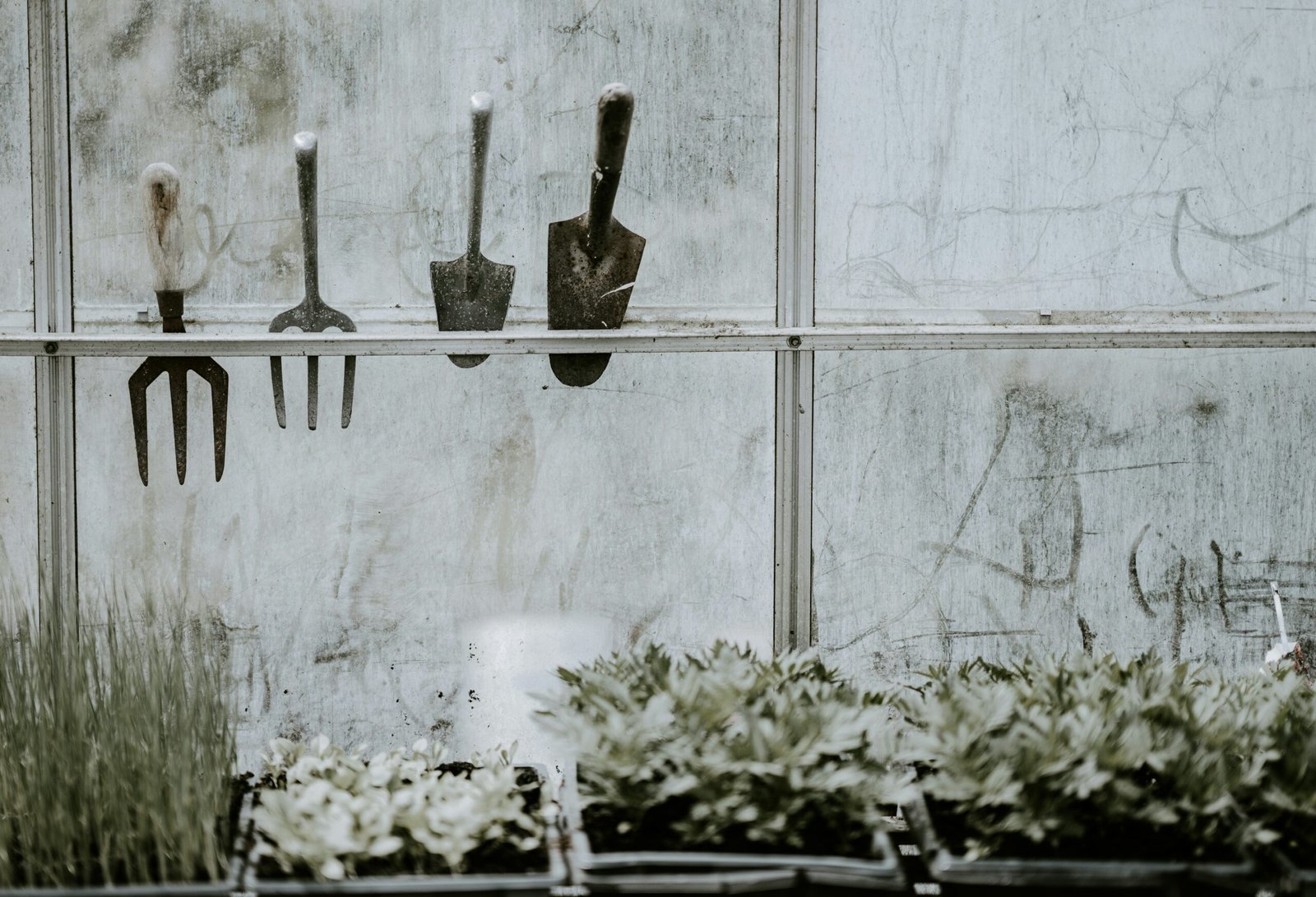Essential Gardening Tools and Their Uses: A Comprehensive Guide


Gardening, whether pursued as a hobby or a profession, necessitates the use of appropriate tools to facilitate various tasks and ensure optimal plant health. Possessing the right gardening tools is imperative for both amateur and professional gardeners, as these tools can significantly enhance efficiency and precision in gardening activities. Well-selected tools not only contribute to accomplishing tasks more swiftly but also aid in achieving better results with minimal effort.
The correct tools are instrumental in performing a wide range of gardening tasks, from planting and pruning to weeding and watering. They are designed to streamline specific tasks, thereby saving time and reducing physical strain. For instance, a quality pair of pruning shears can make clean cuts that promote healthier plant growth, while a sturdy spade can make digging both easier and more controlled, reducing the potential for root damage.
Furthermore, utilizing the appropriate gardening tools can directly impact the health and vitality of the plants. Tools like soil testers and watering cans ensure that plants receive the precise amount of water and nutrients they need to thrive. Conversely, improper or substandard tools can lead to inefficient work, damaged plants, and even physical injury to the gardener.
This comprehensive guide will delve into a variety of essential gardening tools, exploring their specific functions and benefits. From basic tools such as trowels and rakes to more advanced equipment like hedge trimmers and soil aerators, we will discuss how each tool plays a vital role in maintaining and nurturing a garden. Whether you are an aspiring gardener or a seasoned horticulturist, understanding the purpose and proper use of these tools is key to fostering a flourishing garden.
In the following sections, we will detail the particular uses and advantages of each tool, providing insights into how they can enhance your gardening experience. By equipping yourself with the right tools and knowledge, you can maximize your efficiency, achieve greater precision in your work, and ultimately ensure the health and beauty of your garden.
Hand tools are indispensable in any gardener’s toolkit, offering precision and control for a variety of gardening tasks. Among these, trowels, hand forks, pruners, and weeding tools stand out as fundamental instruments for maintaining a thriving garden.
Trowels
Trowels are small, handheld shovels designed for planting and transplanting seedlings or bulbs. Their sharp, pointed blades make it easy to penetrate through compacted soil and intricate root systems. Trowels are also useful for mixing in fertilizers or compost, ensuring the soil is nutrient-rich for optimal plant growth.
Hand Forks
Hand forks, often referred to as cultivators, have short handles and three or four narrow tines. These tools are perfect for loosening soil, aerating around plant bases, and mixing in organic materials like compost. The tines can easily navigate through dense soil and help break up clumps, providing a more conducive environment for root development.
Pruners
Pruners, or pruning shears, are essential for maintaining plant health. They are primarily used for trimming and shaping plants, removing dead or diseased branches, and encouraging new growth. Different types of pruners, such as bypass pruners and anvil pruners, are available to cater to specific pruning needs. The former is ideal for precise cuts on live plants, while the latter is better for cutting through dead wood.
Weeding Tools
Weeding tools, including hand weeders and hoeing tools, are designed to make the tedious task of removing weeds easier. Hand weeders have narrow, pointed tips capable of extracting weeds from tight spaces without disturbing surrounding plants. Hoeing tools, on the other hand, are useful for larger areas, effectively severing weed roots below the soil surface.
The ergonomics of garden hand tools play a crucial role in preventing hand and wrist strain, especially during extended use. Ergonomic designs often feature padded handles, contoured grips, and lightweight materials to minimize physical stress. Such tools not only enhance efficiency but also ensure a more comfortable gardening experience, crucial for both novice and seasoned gardeners alike.
Digging and Planting Tools
Successful gardening hinges on having the right tools to tackle various tasks, particularly those related to digging and planting. Each tool serves a unique purpose, ensuring efficiency and precision in turning soil, digging holes, and breaking up ground. Among the fundamental tools are shovels, spades, hoes, and garden forks, each playing a vital role in the gardening process.
Shovels are indispensable for moving loose materials like soil, compost, or mulch. Their wide, curved blades make scooping and transferring substantial amounts of material efficient. Shovels are also helpful in digging larger holes for planting trees or shrubs. When selecting a shovel, consider the handle length that offers a comfortable grip and leverage, and a blade size that fits the intended purpose.
Spades, with their flat, square-edged blades, specialize in precise tasks such as cutting through tough soil or slicing through roots. These tools are particularly beneficial for edging garden beds and dividing perennials. A spade’s ability to create clean, straight edges makes it an essential tool for detailed gardening work. Opt for a spade with a handle size and weight that matches your strength and the nature of the soil.
Garden hoes are crucial for cultivating and weeding. They come in various designs, from the Dutch hoe with a flat blade perfect for slicing weeds at the ground level to the draw hoe, which excels in creating furrows for planting seeds. A garden hoe’s purpose is to break up soil crusts and manage weeds, essential for maintaining healthy plants. Choosing the right hoe involves considering the blade design that suits your soil and the task you aim to accomplish.
Garden forks, often recognized by their sturdy, pointed tines, are ideal for loosening compacted soil and turning compost. They are also used for aerating soil and lifting roots or tubers from the ground without causing damage. When selecting a garden fork, ensure that the tines are robust enough for your soil type and the handle provides adequate leverage and comfort.
Investing in these essential tools tailored to your garden’s needs will enhance efficiency and effectiveness in your gardening endeavors. Ensure that each tool is well-maintained to prolong its utility and performance.
“`html
Watering Tools and Equipment
Watering is a critical aspect of gardening that ensures plants receive the necessary hydration to thrive. There are several tools available to assist with this task, each designed to cater to various needs and preferences. Understanding the functionality and benefits of these tools can help gardeners choose the right equipment for efficient and effective plant watering.
Watering cans are one of the most traditional and commonly used tools in gardening. They are portable and offer precise control, making them ideal for watering delicate plants and those in containers. With a choice of different materials like plastic, metal, or ceramic, gardeners can select a watering can that best suits their needs and aesthetic preferences.
Garden hoses are another indispensable tool for more extensive watering tasks. They come in various lengths and materials, including rubber, vinyl, and expandable options. Garden hoses often feature adjustable nozzles that allow for versatile watering patterns, including mist, shower, or jet streams. Investing in a high-quality garden hose ensures durability and longevity, even with frequent use.
Drip irrigation systems offer an innovative and efficient solution for watering gardens, especially in arid regions or during water restrictions. This method involves a network of tubes, emitters, and timers that deliver water directly to the plant’s roots at a steady rate. Drip irrigation minimizes water wastage and promotes optimal plant hydration by reducing evaporation and runoff.
Watering wands are specialized tools that extend the reach of a gardener, making it easier to water hanging plants or those in hard-to-reach areas. These wands typically feature ergonomic handles and various spray options, providing gentle and targeted watering suitable for both delicate flowers and larger garden beds.
Proper watering techniques are essential in gardening to ensure plants receive adequate hydration without overwatering, which can lead to root rot and other issues. By selecting the appropriate watering tools, gardeners can effectively manage their water usage, conserving this valuable resource while maintaining healthy and vibrant plants.
“`
Pruning and Trimming Tools
Gardening involves a range of activities that ensure plant health and aesthetics, among which pruning and trimming hold significant importance. Different tools serve these purposes, each designed for specific tasks and plant types. Understanding the use and benefits of pruners, loppers, hedge trimmers, and pruning saws can significantly enhance your gardening efficacy.
Pruners, also known as secateurs, are indispensable for any gardener. They are hand-held tools used for cutting small branches and stems up to approximately one inch in diameter. Bypass pruners function like scissors with two blades, providing a clean cut ideal for delicate or live wood. On the other hand, anvil pruners have a single cutting blade pressing against a flat surface (the anvil), suitable for trimming dry or dead wood. Regular use of pruners encourages healthy growth by removing dead or diseased parts of the plant, thus preventing the spread of diseases.
Loppers are similar to pruners but designed for more formidable tasks. They feature long handles that provide greater leverage, allowing the gardener to cut branches up to two inches in diameter. The extended handles also offer the advantage of reaching higher branches without the need for a ladder. Proper use of loppers involves positioning the branch within the jaws of the tool and making a clean, quick cut, which minimizes damage to the plant.
Hedge trimmers come in manual, electric, and gas-powered varieties and are used for shaping and cutting hedges or bushes. While manual trimmers resemble large scissors and are suitable for small jobs, powered hedge trimmers can handle more extensive trimming tasks efficiently. Regular use keeps the hedge or shrub dense and prevents it from encroaching on spaces like pathways or garden beds.
Lastly, pruning saws are utilized for cutting thicker branches that pruners or loppers cannot handle. These saws come in various shapes and sizes, including straight-blade saws for close-range cuts and curved-blade saws for higher branches. Pruning saws ensure clean cuts without tearing the plant tissue, which is crucial for the plant’s recovery and continued growth.
Regular pruning and trimming not only enhance the plant’s aesthetic appeal but also promote robust growth, improved air circulation, and better exposure to sunlight. Utilizing the appropriate tools effectively and safely can prevent the risk of injury to both the gardener and the plant, thereby maintaining a vibrant and healthy garden.
“`html
Weeding and Soil Management Tools
Gardening success heavily relies on effective weeding and soil management. Essential tools such as weeding forks, hoes, soil knives, and cultivators are indispensable in achieving these goals, as they not only help to remove weeds but also play a critical role in maintaining soil health.
The weeding fork is a specialized tool designed to uproot weeds without disturbing the surrounding plants. Its narrow prongs are adept at reaching deep into the soil to dislodge stubborn roots, thereby preventing regrowth. By using a weeding fork, gardeners can keep their planting areas free from unwanted intruders, allowing their plants to thrive.
Hoes, available in various shapes and sizes, are versatile garden tools primarily used for weeding and soil cultivation. A sharp hoe blade can effortlessly slice through soil, severing weed stems below the surface. This not only eliminates existing weeds but also hinders new weeds from taking root. Furthermore, hoeing regularly aerates the soil, thereby enhancing water absorption and root growth.
Soil knives, also known as hori-hori knives, are multi-functional tools that can cut, dig, and pry. The serrated edges allow for easy slicing through tough soil or thick roots, making them perfect for both weeding and planting. Their versatility makes them a must-have tool for detailed garden work, where precision is key.
Cultivators, either hand-held or long-handled, are used to loosen soil, break up clumps, and mix in soil amendments. They facilitate better airflow and water penetration, which are critical to maintaining a healthy soil structure. Hand-held cultivators provide more control for targeted weeding, especially in confined spaces, while long-handled versions are ideal for covering larger areas efficiently.
Effective weeding and soil preparation involve more than just removing unwanted plants. Consistent use of these tools can significantly improve soil structure, leading to a more productive garden. For optimal results, gardeners should aim to weed regularly and use these tools to cultivate the soil, thereby promoting a healthier, more sustainable gardening environment.
“““html
Tools for Lawn Care
Maintaining a healthy lawn requires the use of several essential gardening tools. Chief among these is the lawnmower, which is indispensable for keeping grass at an optimal height. Regular mowing not only keeps the lawn looking tidy but also encourages dense growth, which helps prevent the invasion of weeds. Various models of lawnmowers are available, including manual, electric, and gas-powered options, each catering to different lawn sizes and user preferences.
Another crucial tool for lawn maintenance is the edger. Lawn edgers are designed to create clean, sharp boundaries along the edges of lawns, walkways, and garden beds. This not only enhances the aesthetic appeal but also prevents grass from creeping into flower beds and other areas where it is unwelcome. A well-defined edge greatly contributes to a manicured appearance, making the landscape look professionally maintained.
Grass shears and lawn rakes also play significant roles in lawn care. Grass shears are perfect for trimming hard-to-reach areas and around obstacles like trees and garden ornaments, ensuring an even cut throughout the lawn. On the other hand, lawn rakes are essential for removing debris, such as leaves and thatch, which can suffocate grass and create an environment conducive to pests and diseases. By regularly raking, you not only keep the lawn clean but also improve air circulation and encourage healthy grass growth.
Overall, the combination of these tools – lawnmowers, edgers, grass shears, and rakes – aids in overcoming common lawn care challenges. Regular use of these tools ensures that the lawn remains well-manicured, healthy, and aesthetically pleasing throughout the growing season. Each tool has its specific function, and together they form an integral part of any comprehensive lawn care strategy.
“`
Advanced and Specialty Gardening Tools
For garden enthusiasts seeking to elevate their gardening experience beyond basic cultivation, a range of advanced and specialty gardening tools can prove invaluable. These tools, while not essential for beginners, offer distinct advantages that can significantly enhance garden management and the execution of advanced gardening techniques.
One such tool is the soil testing kit. Understanding the composition and pH level of your soil is crucial for the successful growth of various plants. By using a soil testing kit, gardeners can gain insights into nutrient levels and make informed decisions on fertilization and soil amendments. This tool is particularly useful for tailoring soil conditions to specific plants, ensuring optimal growth and health.
Another invaluable tool for the advanced gardener is the composter. A composter allows for the efficient recycling of organic garden and kitchen waste into nutrient-rich compost. This compost can then be used to improve soil structure, enhance moisture retention, and provide essential nutrients to plants. By investing in a composter, gardeners not only reduce waste but also create a sustainable cycle that contributes to a healthier garden ecosystem.
Garden vacuums are also a beneficial addition to an advanced gardener’s toolkit. These powerful machines simplify the maintenance of garden cleanliness by efficiently collecting leaves, debris, and even small twigs. This not only keeps the garden tidy but also reduces the risk of diseases and pests that can thrive in accumulated organic matter. Garden vacuums, often equipped with shredding capabilities, can further reduce the volume of waste, making disposal easier and creating potential material for mulching.
For gardeners dedicated to optimizing their horticultural practices, these advanced tools provide significant benefits. Although they might not be necessary for a novice, the adoption of soil testing kits, composters, and garden vacuums can greatly assist in achieving a more productive, sustainable, and well-managed garden. Advanced and specialty gardening tools enable a deeper understanding and enhanced execution of gardening activities, fostering a garden that thrives throughout the seasons.



